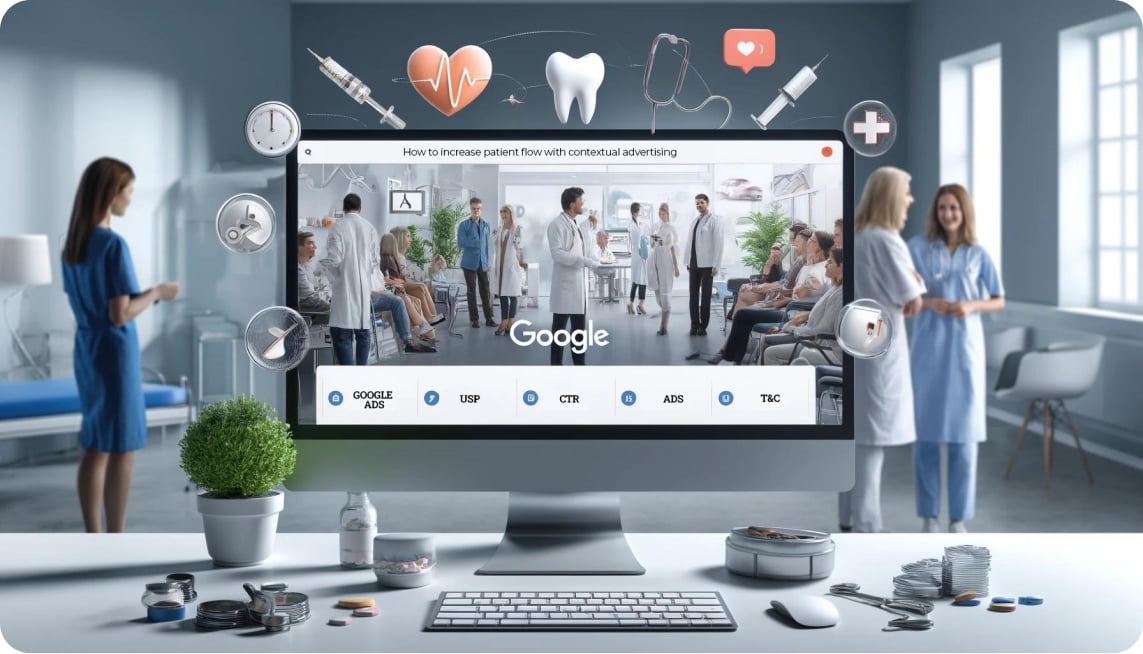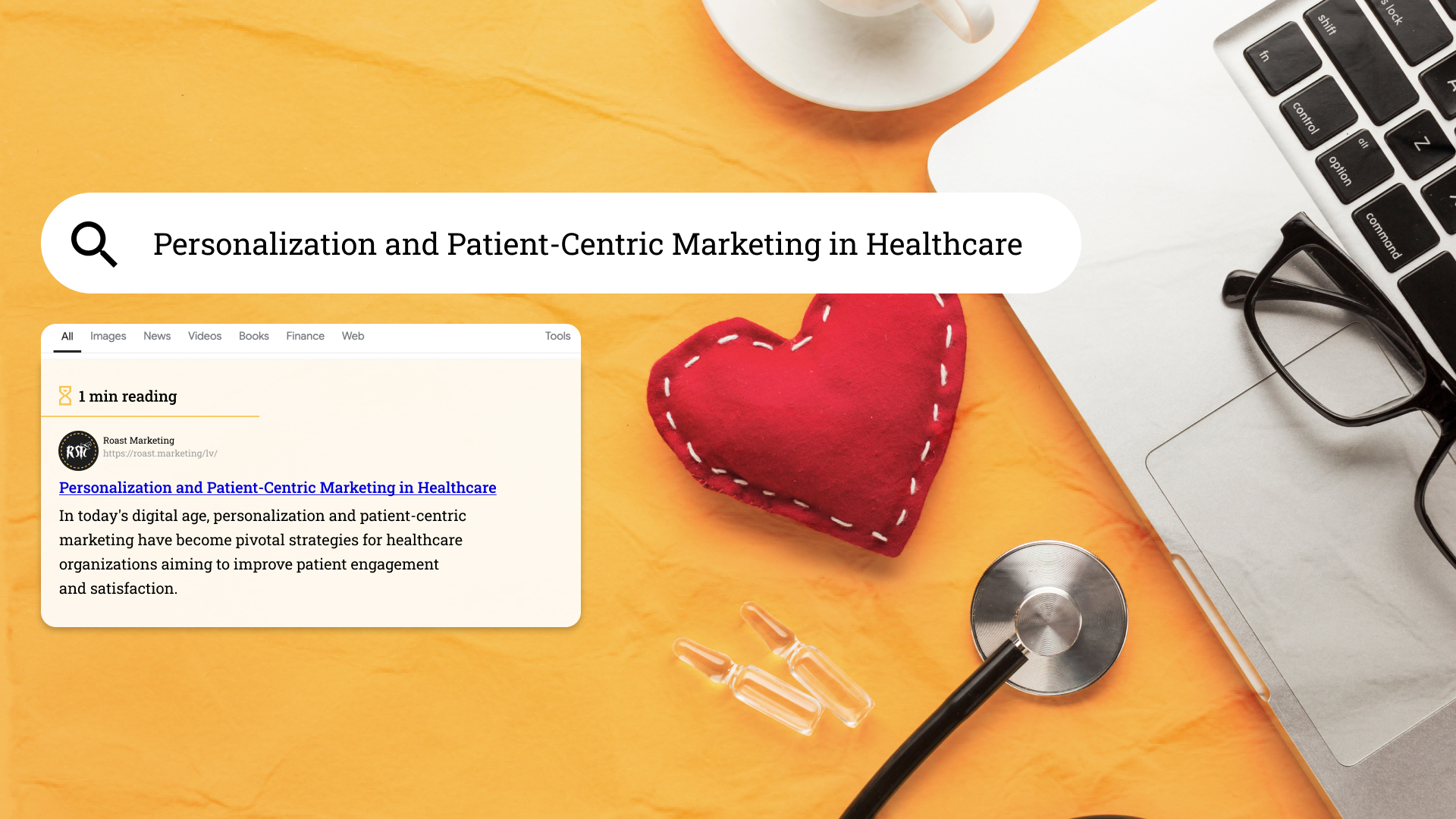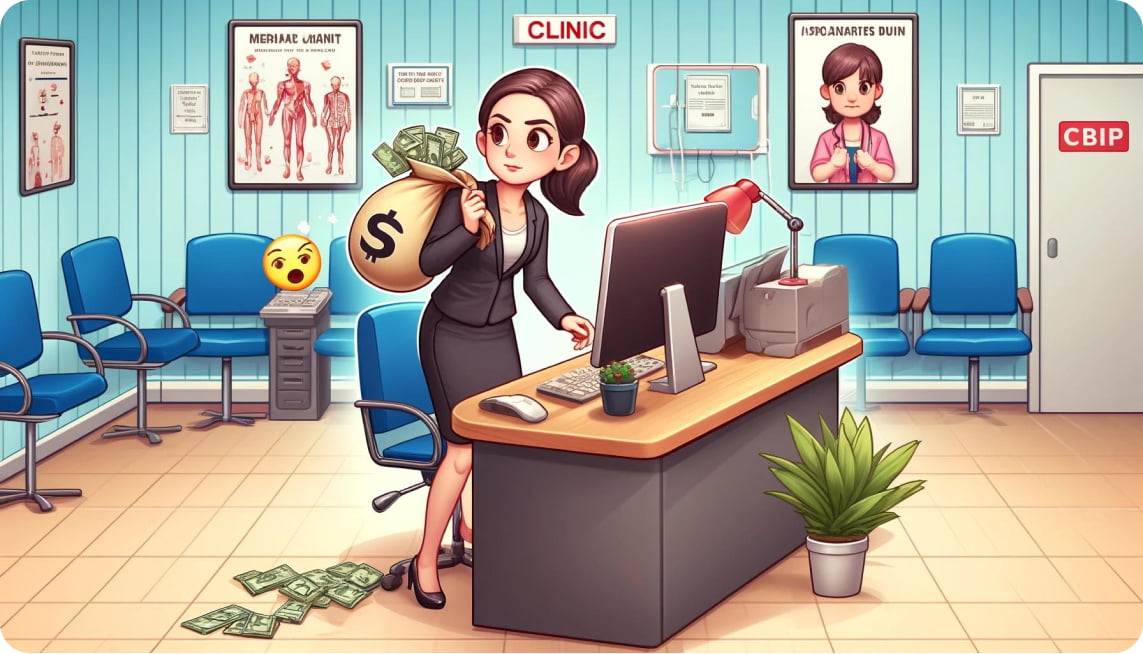How to increase patient flow with contextual advertising
The article discusses the main setup issues, ways to identify the target audience, and a step-by-step guide to creating and optimizing ad campaigns.
Problems in setting up contextual advertising in the medical niche
Contextual advertising is a powerful tool for attracting patients to medical facilities. However, like any marketing tool, it requires a competent approach and an understanding of the specifics of the medical business. Here are the main problems clinics face when setting up contextual advertising:
- High competition and cost per click: In the medical field, competition among clinics and specialists is high, leading to increased cost per click (CPC) and reduced ad profitability. For example, an advertising campaign for a dental clinic in Riga may be more expensive due to the large number of competitors.
- Regulatory restrictions and requirements: Medical advertising is regulated by law, and violations can result in fines and campaign blocks. For instance, it is prohibited to use statements guaranteeing treatment results, which limits the ability to create attractive ads.
- Lack of clear positioning and unique selling proposition (USP): Without a clear understanding of their competitive advantages, it is difficult for clinics to create appealing ads. For example, a clinic that does not highlight its strengths, such as unique equipment or highly qualified specialists, will be less noticeable among competitors.
- Incorrect choice of keywords and targeting: Mistakes in keyword selection can lead to attracting irrelevant traffic and, consequently, low conversion rates. For example, using overly general keywords like “medicine” or “health” instead of specific ones like “cavity treatment” or “cardiologist consultation.”
How to identify your ideal patient and where to “catch” them
Identifying the target audience is a key step in creating an effective advertising campaign. The ideal patient for each clinic will differ depending on specialization and services offered. Here are several steps to help determine your ideal patient:
- Analysis of Current Patients: study the demographic data, behavior, and needs of your current patients. What services are in highest demand? Who most frequently seeks help? For example, if you notice that most of your patients are women aged 30 to 50 who come for cosmetic services, you should focus on this group.
- Creating a Profile of the Ideal Patient: determine the age, gender, income level, place of residence, occupation, and other characteristics of your ideal patient. For instance, if your clinic specializes in pediatrics, your ideal patient is parents with young children living within a 10 km radius of the clinic.
- Choosing Advertising Platforms: identify where your target audience spends time online. These can be search engines, social networks, thematic websites, and forums. For example, for an aesthetic medicine clinic, advertising
Step-by-step guide for a medical facility: identifying your USP, generating compelling ads, considering legal aspects, setting up and optimizing campaigns
Identifying Your USP (Unique Selling Proposition)
Competitor Analysis: Study what your competitors are offering, including their strengths and weaknesses. For example, a competing clinic might offer night appointments. If you have unique equipment or specialized staff, highlight these aspects.
Identifying Your Advantages: Determine what sets your clinic apart from others. This could include unique services, highly qualified specialists, modern equipment, convenient location, personalized patient care, and more. For example, your clinic might offer laser therapy services not available at nearby competitors.
Formulating Your USP: Based on your analysis, formulate a USP that is clear and attractive to your target audience. For example, “Modern dental treatments without pain and fear.”
Generating Compelling Ads
- Creating an Attractive Headline: The headline should immediately grab attention and include key information about the service. For example, “Pain-Free Laser Dentistry in the City Center.”
- Crafting the Service Description: In the description, highlight the main benefits and advantages for the patient. Use simple and clear language. For instance, “Our specialists use the latest laser technology to treat teeth without pain or stress. Learn more and book your appointment.”
- Including a Call to Action: Add a call to action, such as “Book an Appointment,” “Get a Consultation,” etc. For example, “Schedule your free consultation today.”
- Considering Legal Aspects: Ensure that your ad complies with legal regulations and the rules of advertising platforms. Avoid prohibited phrases and promises, and provide only verified information. For example, avoid statements like “guaranteed cure.”
Setting Up and Optimizing Campaigns
- Keyword Selection: Choose relevant keywords that reflect your clinic’s services. Use tools like Google Keyword Planner for keyword selection. For example, “pain-free dental treatment,” “cardiologist consultation,” “pediatrician near me.”
- Targeting: Set up targeting for your audience based on age, gender, geographic location, and other parameters. For example, target ads for women aged 25-45 living within a 10 km radius of the clinic to promote cosmetic services.
- Launching the Campaign: Launch the advertising campaign and closely monitor its performance. For example, track CTR (click-through rate) and conversion rates.
- Optimization: Regularly analyze the results and make adjustments. Remove irrelevant keywords, adjust bids, and test different ads. For example, if one ad has a low CTR, replace it with a more attractive one.
- Analytics: Use analytics tools like Google Analytics to track user behavior on the website and assess the effectiveness of ad campaigns. For example, analyze which pages are visited most often after clicking on the ad and how much time users spend on them.
Contextual advertising can significantly increase the flow of patients to your clinic if approached correctly in its setup and management. Identifying the ideal patient, highlighting unique advantages, creating compelling ads, and constantly optimizing campaigns will help achieve high results and attract more patients.










